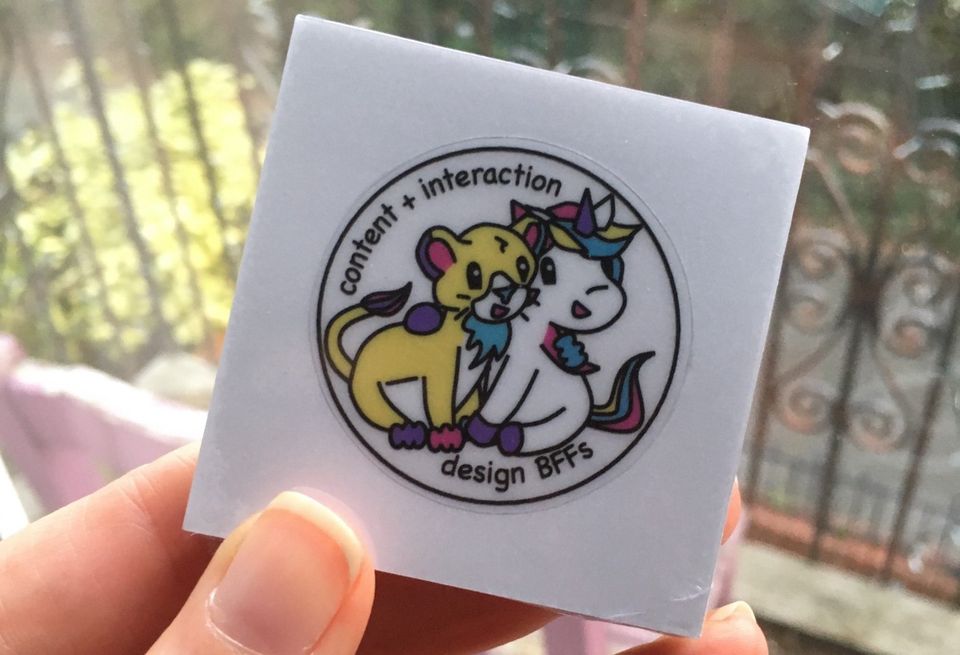The “UX designer and copywriter” anti-pattern

When it should be interaction designer and content designer
This is inspired by a blog post by Adam Silver where he discusses how interaction designers work with content designers and developers. I want to focus on a particular anti-pattern that he talks about, namely where the content person just ‘does the words’.
I’ve seen this happen a lot and would describe it as the “user experience (UX) designer and copywriter anti pattern”.
What do I mean by this anti-pattern?
First of all, I have a healthy respect for both UX designers and copywriters. In fact in my former life as an agency-side UXer I worked with a copywriter (or more correctly a technical writer) on a website that required turning scientific papers into Plain English. It was great.
But this isn’t how government services teams are supposed to work. Here, an interaction designer should work together to make a journey that takes advantage of flows and formats. And to quote a comment from Ben Terrett, then-head of Design at GDS, “user experience is the responsibility of everyone in the team”. So no UX designers.
Ideally there should be a design partnership between an interaction designer and content designer. However, what often happens is that the interaction designer becomes a “user experience designer” doing all the flows, and the content designer becomes a “copywriter”, fitting in the words.
Three common versions of this anti-pattern
The three different versions of this pattern I’ve seen are:
- The interaction designer hasn’t unlearned agency UX practices. I’ve seen this one most frequently, and as a former agency UXer, I get it Generally, anyone who has worked in an agency is used to doing it all, often under extreme time pressures. Collaborating? The client didn’t pay for that! In these situations the interaction designer needs to take advantage of the less frenetic pace of agile practices and invest time in figuring out how to collaborate in an equitable way. This may mean doing more on post-its, setting up frameworks, and even looking for collaborative document formats (no to Sketch, yes to Google docs or Mural/Miro/Jamboard) as well as giving support for HTML prototyping. I’ve also found that it takes time to get used to the sparseness of not second-guessing content – rather than putting everything on a screen, there’s a chance to do without and check through usability testing if it’s really required.
- The content designer hasn’t owned being a designer rather than a writer. The main differences I see between a writer and a designer are about format and iteration. Designers will challenge the format and also change things as they go. As far as I can tell, these aren’t as common in writing disciplines. I believe the best test for a content designer being a content designer is that they consider themselves a designer and so expect to be involved with deciding journeys and such. Incidentally, I worked with a content designer for nearly 2 years who ticked all the boxes for being a designer – could propose journeys, translated what we saw in usability testing into changes – but refused to let me call him a designer. Until he moved onto another team where he got pushed into being a copywriter and found himself saying “but I’m a designer!” Some things are a long game it seems…
Conversely, an interaction designer found herself pushed into being a UXer as the content designer refused to collaborate with her and instead chose to be a copywriter “just do the flow and I’ll put the words in”. - Either has been burned by a previous designer pairing that turned into the UXer-copywriter anti-pattern. Talking to both interaction designers and content designers, I’ve seen interaction designers who gave up after trying to collaborate with content designers who didn’t want to, and content designers traumatised from being pushed out of the design and prototyping process. To this I think there’s a reminder that every pairing is a fresh opportunity and to enter it with the best of intentions.
Conclusion: It’s all about equity
Assuming best intentions and that these things often happen by accident, I believe that this anti pattern is about equity. If you’re an interaction designer, ask: am I choosing to collaborate, even if it’s a bit slower?
If you’re a content designer ask: do I expect to be treated like a designer? If the answer to either of these is no, then there’s an equity problem.
Footnote: Does this pattern happen in reverse? Where a content person is doing all the work?
The reverse of this I believe would be the “UX designer and front-end developer anti pattern”. This in my experience has been rare, but mainly occurred when the content designer was far more experienced than the interaction designer. In these situations it was important to make sure that the ‘front-end developer’ had a good design mentor to make sure that the content designer wasn’t having to do the work of two designers.
Further reading
- Powers of Two: Finding the Essence of Innovation in Creative Pairs by Joshua Wolf Shenk – a book that unpacks the value of partnerships, using such examples as songwriters Jon Lennon and Paul McCartney and investment brokers Warren Buffett and Charlie Munger. The book suggests that great partnerships have a constant conversation, two people egging each other on towards excellences, and some complementary skills (but more similarities than might be publicly acknowledged).
- Working Together: Why Great Partnerships Succeed by Michael D. Eisner – another book on partnerships, less about theory and more about story, but with two huge assists – the writer Michael D. Eisner was part of one storied partnership (working as Disney CEO with Frank Wells from 1984 until Wells’ death in 1994) and could also get first hand access to other power partnerships like Bill and Melinda Gates.
Member discussion